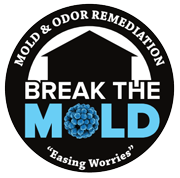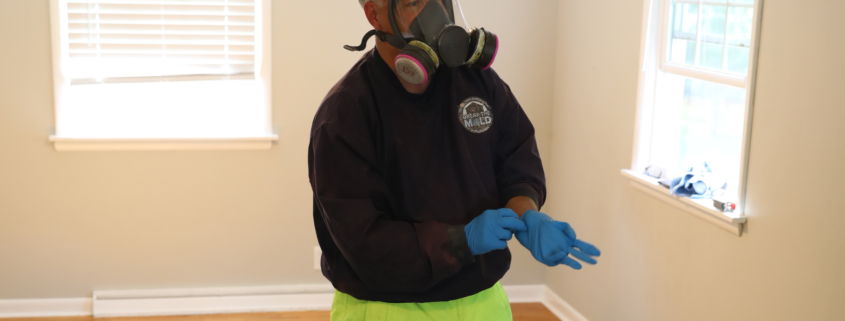How to Prevent Mildew from Coming Back After Cleaning it Up
Mildew can come back after cleaning it up if the underlying cause of the mildew growth is not addressed. This can include things such as high humidity levels, leaks, or other sources of moisture.
Without addressing these underlying issues, the mildew may continue to grow and reappear despite cleaning efforts. The frequency of mildew returning depends on the level of humidity and the presence of moisture in the area. Even if underlying causes are addressed, mildew can come back if the area is not kept clean and well-ventilated
.
To prevent mildew from coming back after cleaning it up, it is important to address the underlying cause of the mildew growth.
Some steps that can be taken to prevent mildew include:
Improve Ventilation
Improving ventilation in the affected area, such as by opening windows or installing exhaust fans.
To improve ventilation in a mold-affected area, open windows, install exhaust fans and vents, use air purifiers, insulate pipes and increase airflow. To control humidity levels, use a dehumidifier or air conditioner, set the humidity level, monitor humidity levels, and run equipment regularly. It is important to address the source of the mold, such as leaks or water damage, as these steps may not completely eliminate the problem.
Control Humidity
Controlling humidity levels, by using a dehumidifier or air conditioner.
To prevent mold growth, control humidity levels by using a dehumidifier or air conditioner. Set the humidity level below 60%, monitor humidity levels, run equipment regularly, clean and maintain it properly. Address the source of the mold, such as leaks or water damage, as controlling humidity alone may not completely eliminate the problem.
Regularly Clean and Maintain Surfaces
Regularly cleaning and maintaining surfaces that are prone to mildew growth, such as shower stalls and bathtub surrounds.
Regular cleaning and maintenance of surfaces that are prone to mildew growth is crucial in preventing the growth of mildew. In the bathroom, surfaces such as shower stalls and bathtub surrounds are particularly susceptible to mildew growth due to the high humidity levels.
To clean these surfaces:
- Use a mildew-specific cleaner or a mixture of water and bleach.
- Spray the cleaner onto the surfaces and allow it to sit for several minutes before scrubbing with a brush.
- After cleaning, rinse the surfaces with water and dry them thoroughly.
To prevent mildew from returning, it’s important to keep surfaces dry and free of excess moisture. This can be done by using a squeegee to remove water after each shower or bath, and by running the bathroom fan or opening a window to allow moisture to escape. It is also important to regularly check for leaks or water damage in the bathroom, as these can contribute to mildew growth.
Fix Leaks and Water Damage
Remember, mildew needs moisture to grow. So fixing any leaks or other sources of water damage is crucial in preventing mildew growth.
To fix leaks, locate the source of the leak and repair it as soon as possible. Common sources of leaks include broken pipes, damaged roofing, and leaks around windows.
If you are unsure of the source of the leak, consider hiring a professional plumber or contractor to help.
In addition to fixing leaks, it is important to address other sources of water damage such as water infiltration from outside, overflowing gutters and poor drainage. This can be done by properly sealing and insulating the home, cleaning gutters and making sure the drainage system is working properly. Regularly inspecting and maintaining these areas can help to prevent water damage and mildew growth.
Use Mildew-Resistant Paint
Using mildew-resistant paint or other products in areas where mildew is a recurring problem.
There are a variety of mildew-resistant paint and other products that can be used in areas where mildew is a recurring problem. For example, paint with an added mildewcide, such as Zinnser Perma-White Interior/Exterior Mold and Mildew Proof Paint, can help to prevent mildew growth on walls and other surfaces.
Another option is to use a paint that is formulated to be highly resistant to moisture and mildew such as bathroom paint, like Benjamin Moore’s Bath & Spa paint. Additionally, mildew-resistant caulk and grout can be used in areas such as bathrooms and kitchens to prevent mildew growth. Another option is using mildew-resistant tiles or other building materials. These products can help to prevent mildew growth and keep your home free of mildew.
Apply a Mildew Inhibitor
Apply a mildew inhibitor, a product that slows down the growth of mildew.
A mildew inhibitor is a product that slows down the growth of mildew. These products work by creating an environment that is less conducive to mildew growth. They can be added to paint, caulk, and other building materials to prevent mildew from growing on surfaces.
To apply a mildew inhibitor, you can mix the product into the paint or caulk before applying it to the surface. Be sure to read and follow the manufacturer’s instructions for the specific product you are using.
It is also important to clean and dry surfaces before application, as mildew inhibitors are most effective when applied to clean and dry surfaces. Additionally, it’s important to note that mildew inhibitors will not eliminate the mold problem but they slow the growing process.
Prevent Mildew From Coming Back
Again, the main point of this article to address the source of the mold, such as leaks or other water damage to prevent mold from growing.
Remember that mildew can be toxic and can cause health problems, so it’s important to clean it up as soon as it appears and take steps to prevent it from returning.
To completely eliminate your mold and mildew problem, call a professional. Call Break The Mold.



